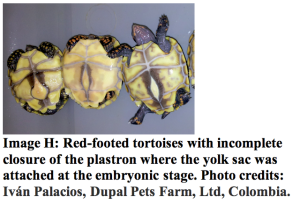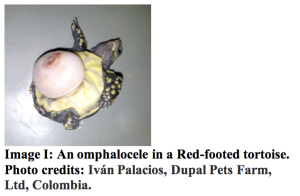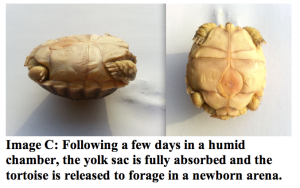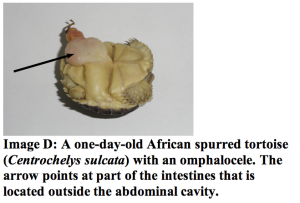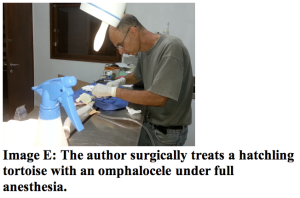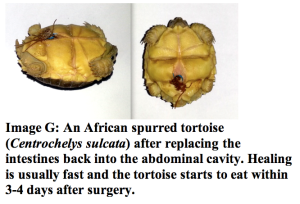Omphalocele is a pathological situation in which a neonate is born/hatch with an incomplete closure of the abdominal cavity.
In this condition, an organ or some organs are usually stay outside of the abdominal cavity, and in many conditions there is a need for a surgical treatment to replace the abdominal organs back to their original site and suture close the abdominal cavity.
Two other anatomical conditions may appear in hatchling tortoises and resemble to an omphalocele; in the first condition, the embryonic sac has been absorbed almost completely, except a remnant remain and, in the second condition, the embryonic sac has been only partially absorbed.
A reference situation will be first given with the spur-thighed tortoise (Testudo graeca).
The following image presents a normally absorbed yolk sac in a hatchling tortoise.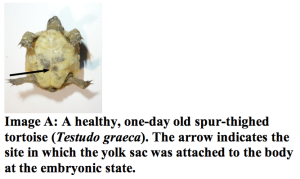
In the past couple of years, several African spurred tortoise (Centrochelys sulcata) were brought to our facility with the yolk sac still attached to the plastron. A remnant yolk sac could be fully, or partially absorbed, at the time when the tortoise hatches from the egg. In both conditions, it is best not to interfere surgically, but to place the tortoises in a humid cage with heating, and mimic the “inside-egg conditions” for a few days, until the yolk sac is fully absorbed. The following images present such conditions. 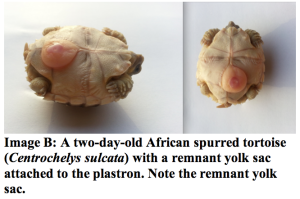
It is important to discriminate between an omphalocele to a condition in which the embryonic yolk sack has not been fully absorbed. Once an omphalocele occurs, and a few internal organs are located out of the abdominal cavity, it is important to surgically manipulate the internal organs and replace them back into the abdominal cavity as fast as possible, and then suture close the plastron site. This would allow a fast healing of the plastron.
A surgical manipulation of the abdominal organs occurs under full anesthesia, with additional local anesthesia, given during the surgery as well as pre- and post-surgically.
Following the surgery, the newborn healing tortoise may fast 4-8 days. It is placed on a clean paper towel and hygiene is maintained carefully. To encourage eating after surgery it is best to add to its cage a few other tortoise offspring that has no appetite deficits. Healing is fast after the tortoise regains eating. 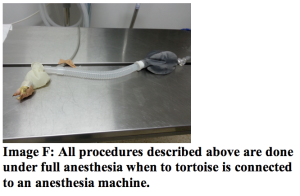
While most of the tortoise that were brought to my clinic with omphalocele were of the species Centrochelys sulcata, similar pathology can appear in different species such as the Red-footed tortoise (Chelonoidis carbonaria) or the Yellow-footed tortoise (Chelonoidis denticulate).